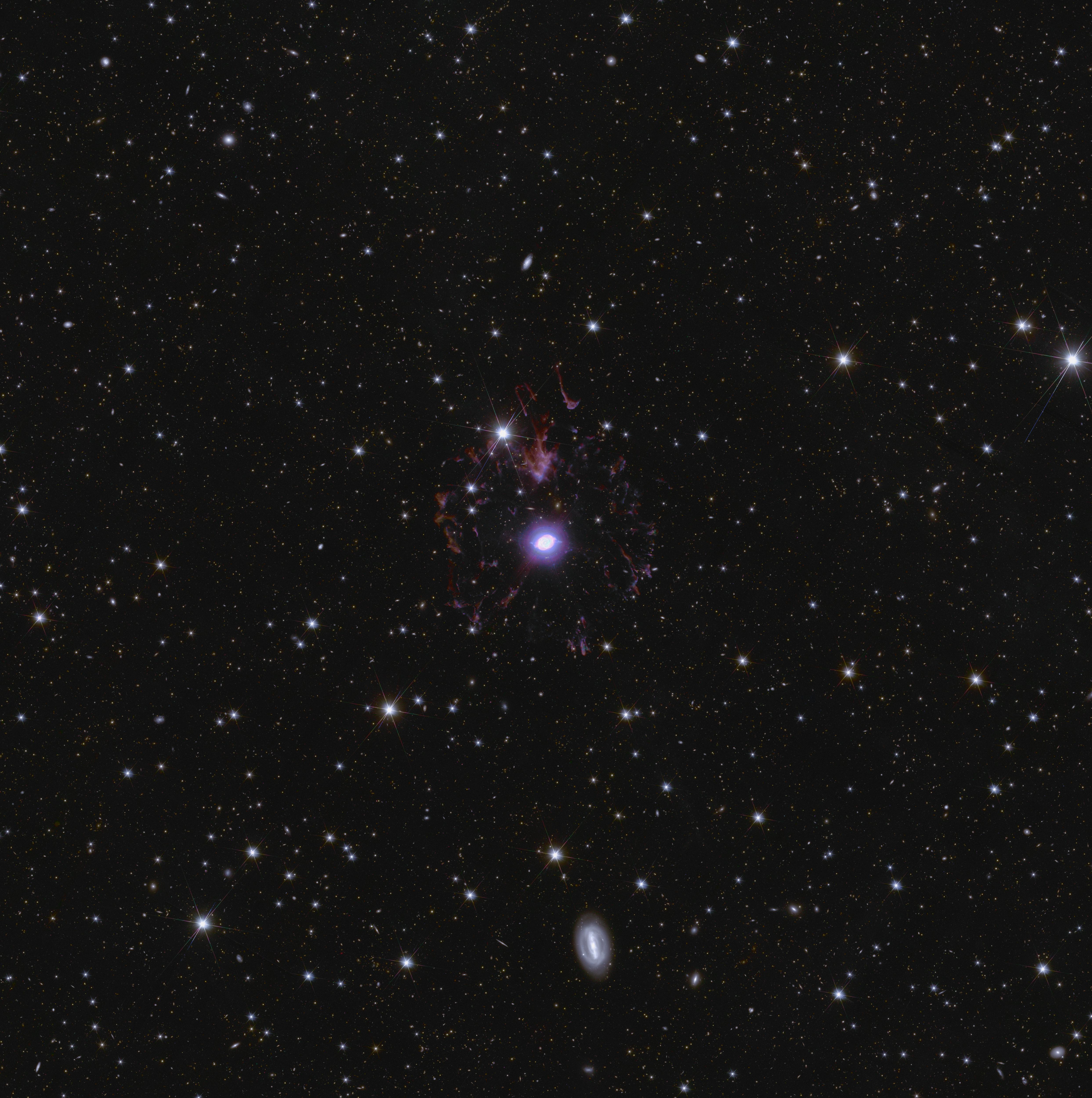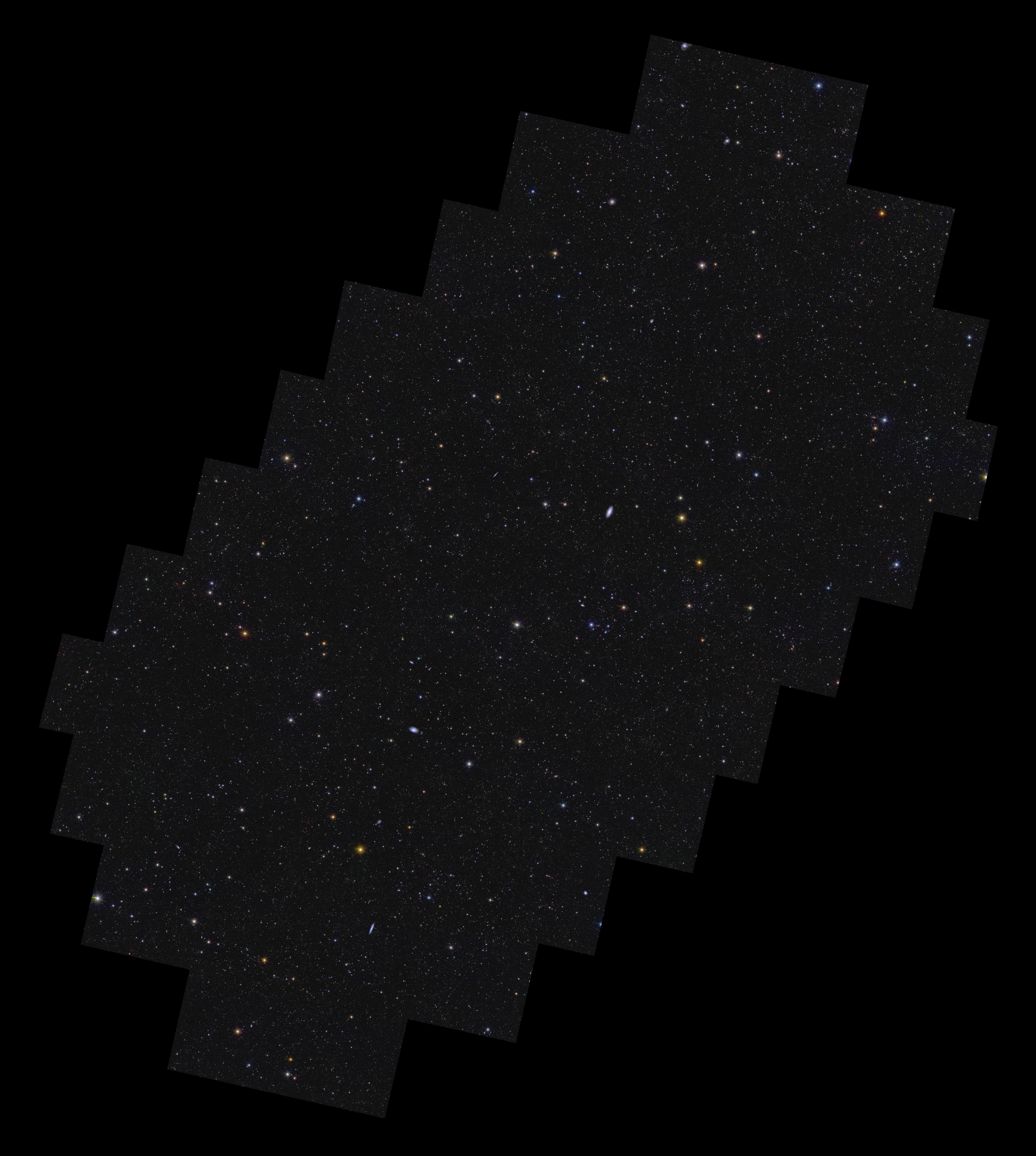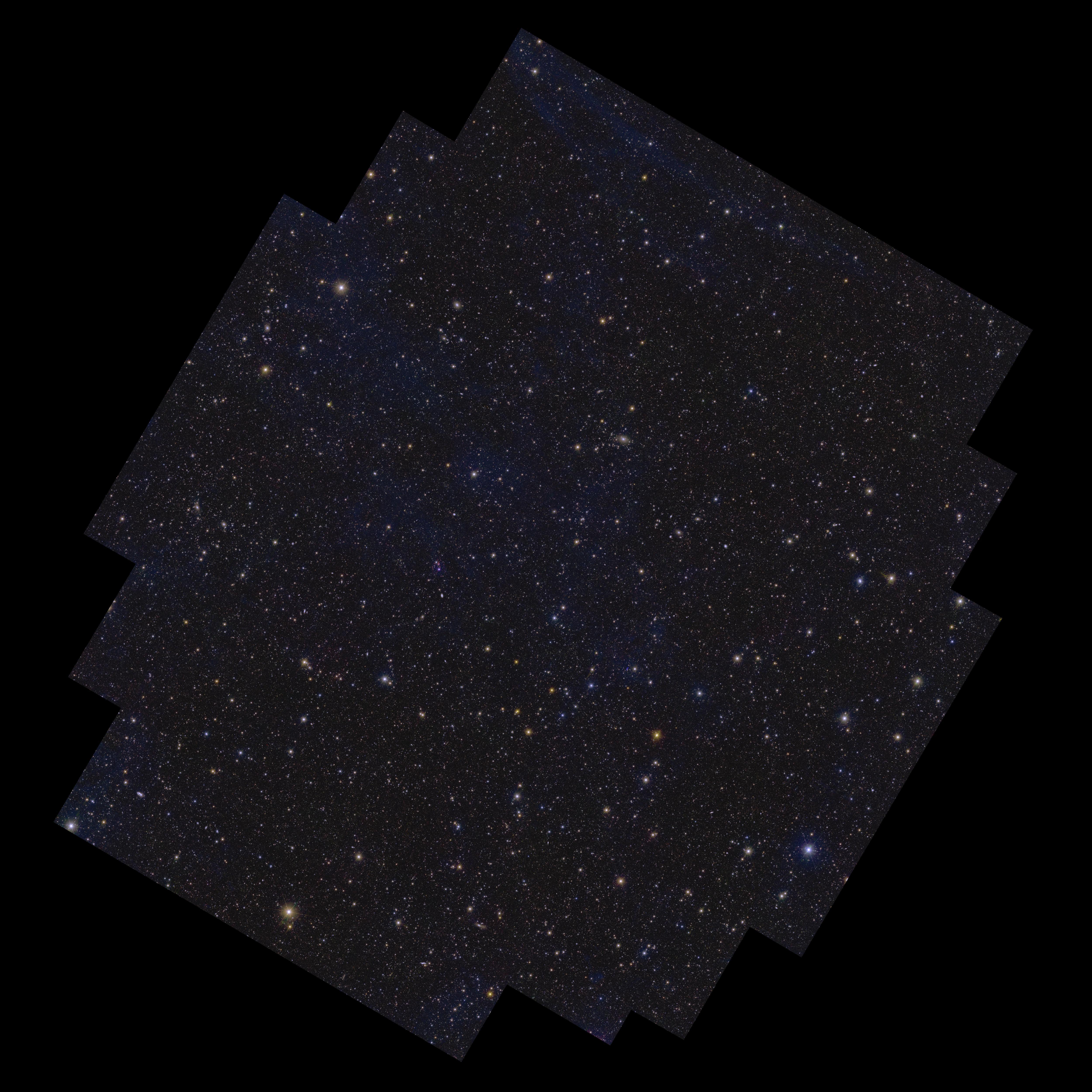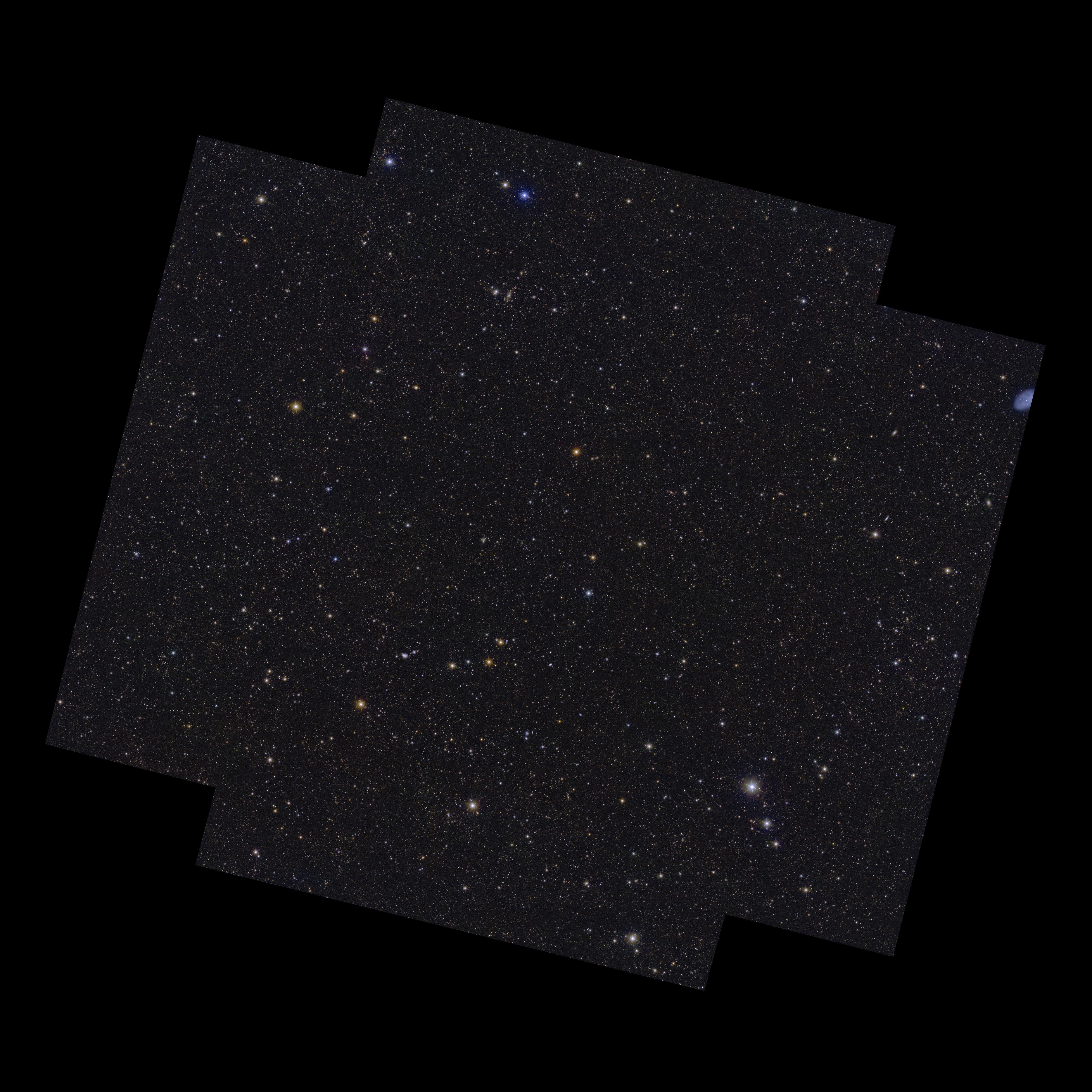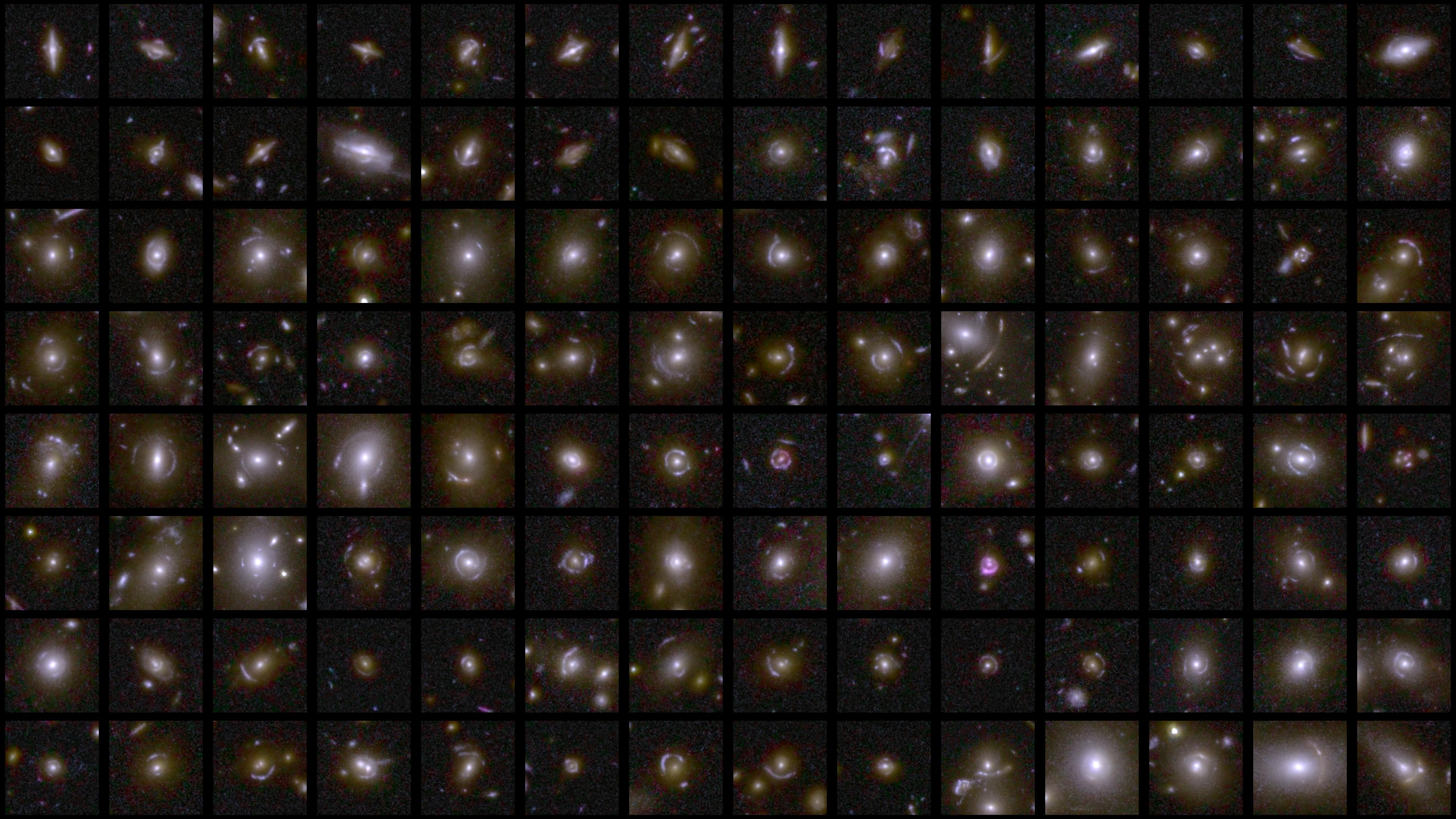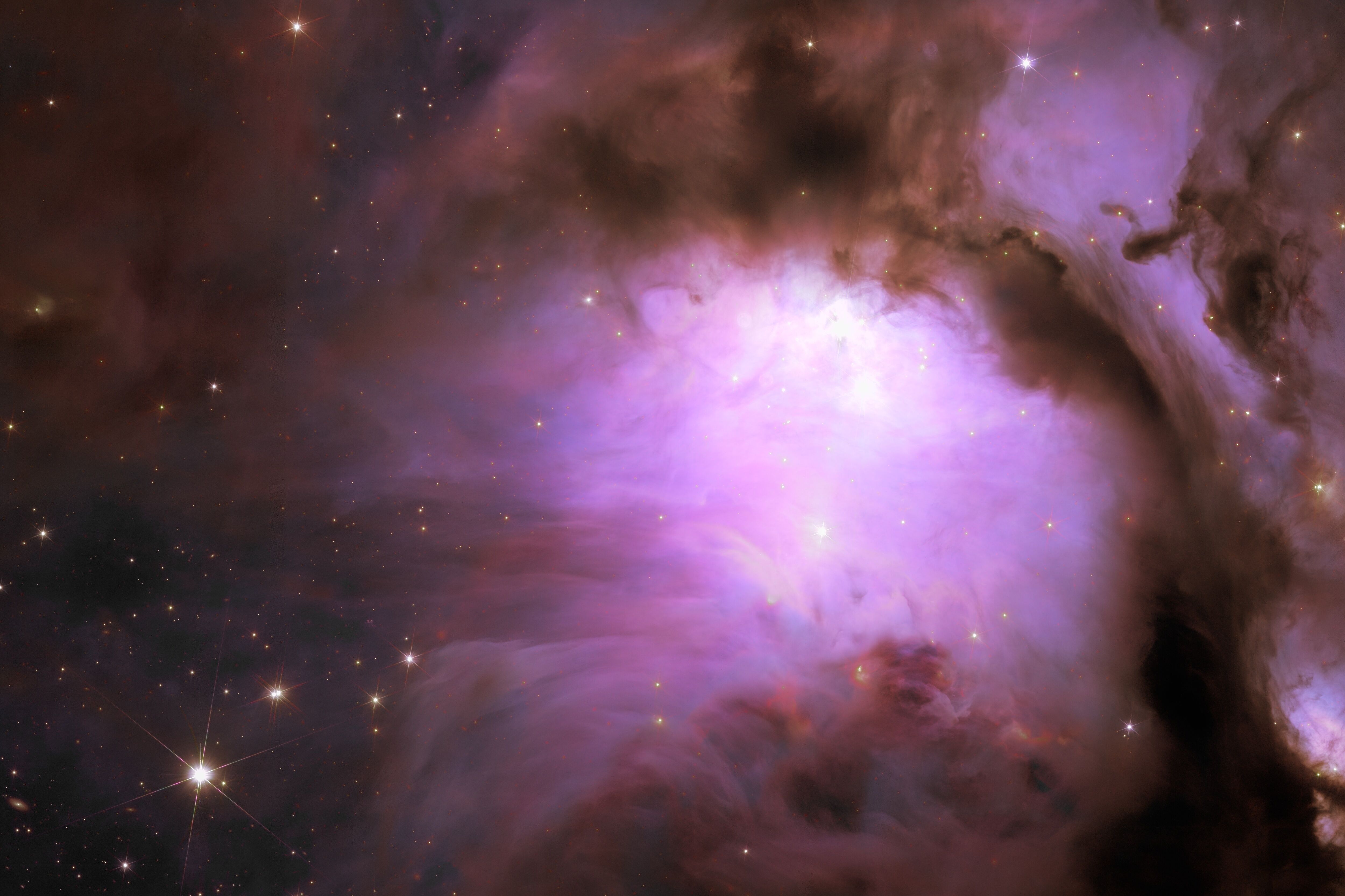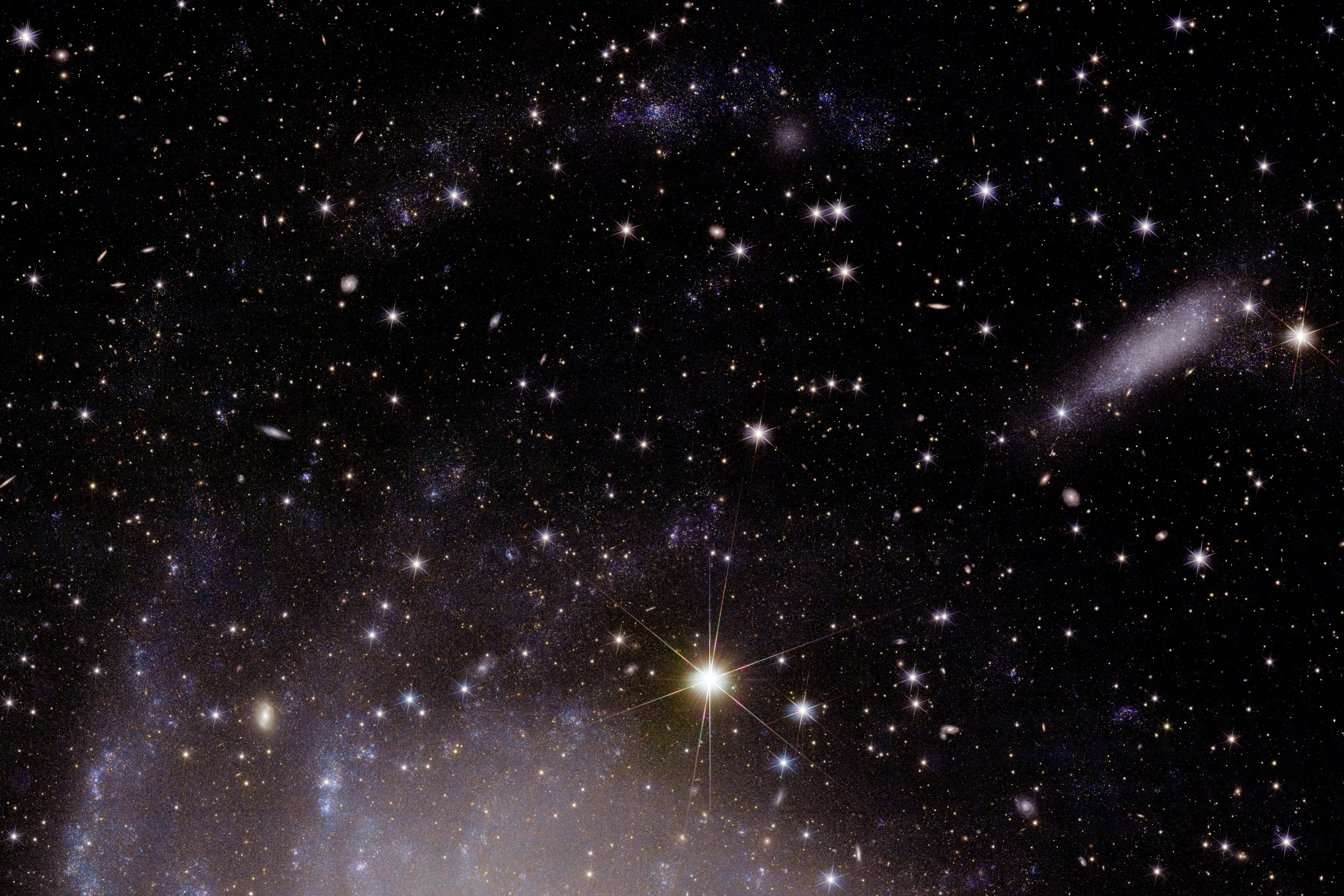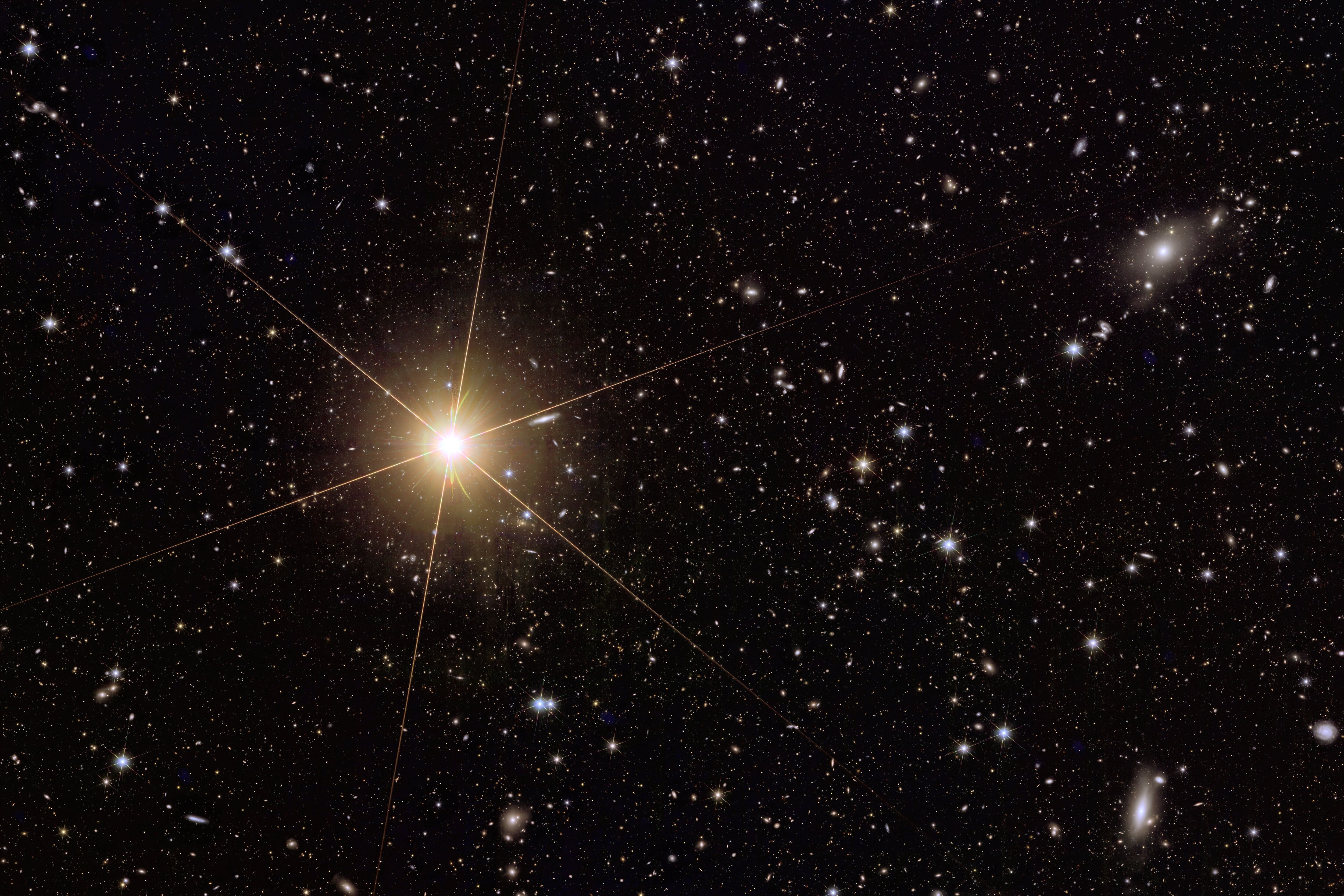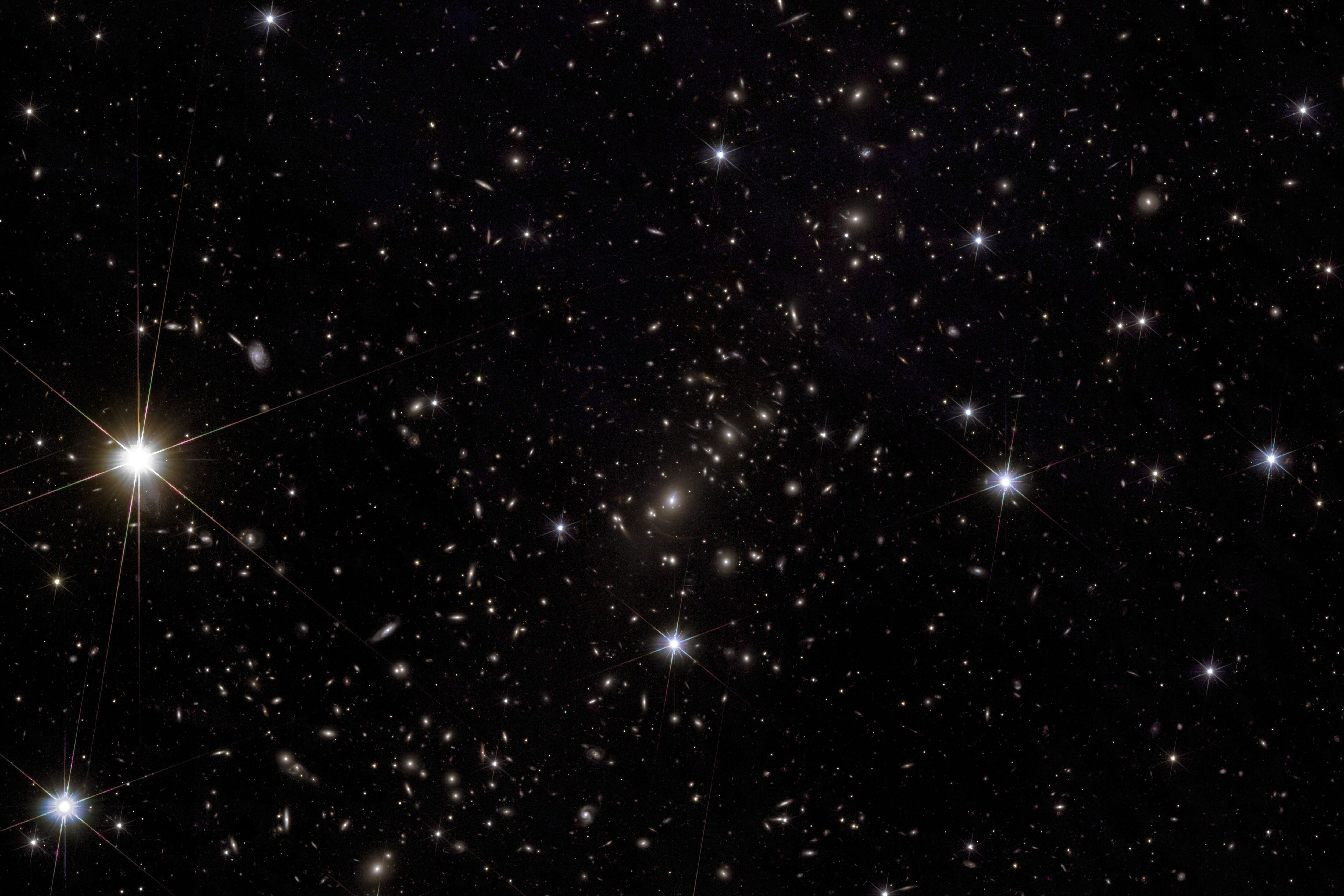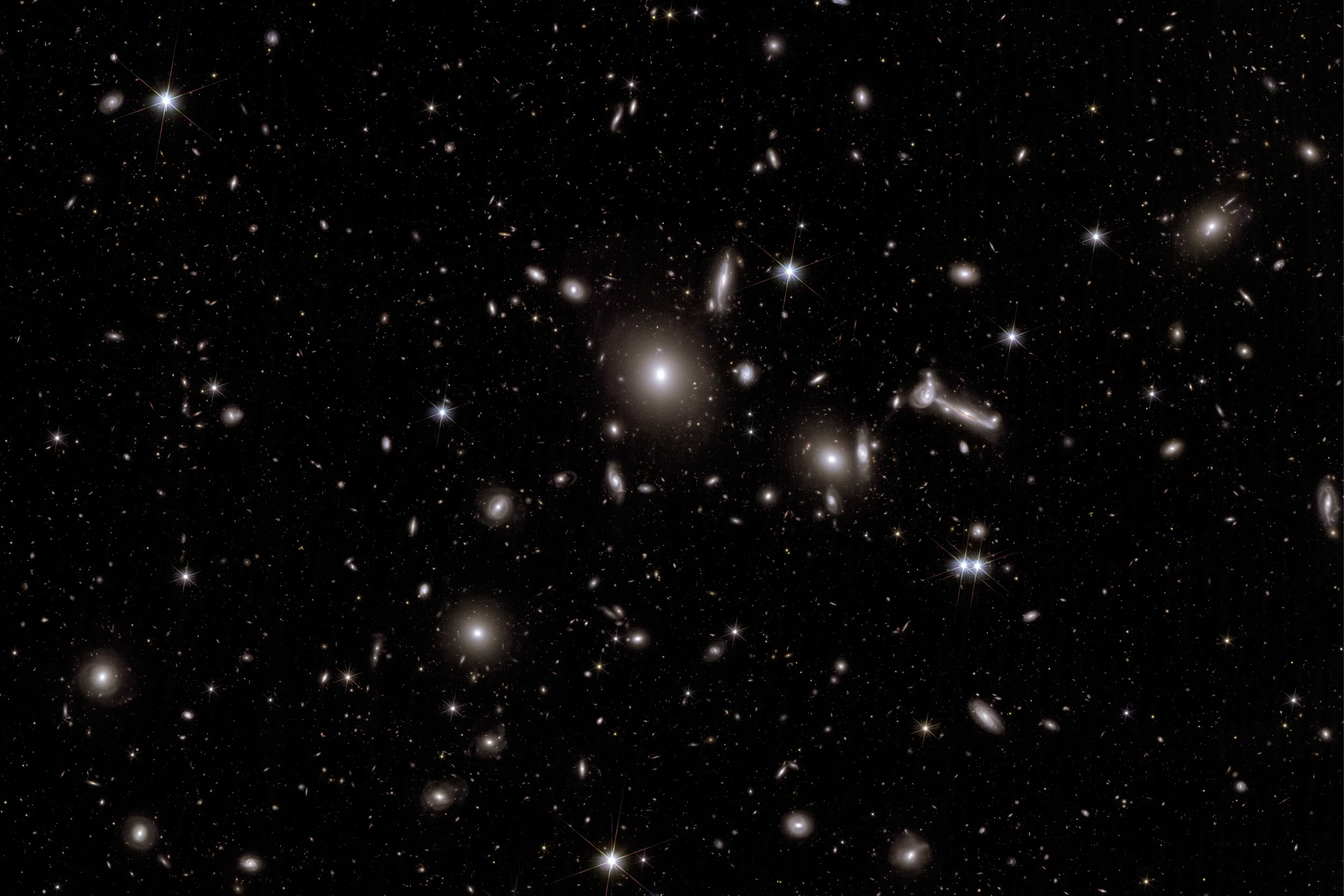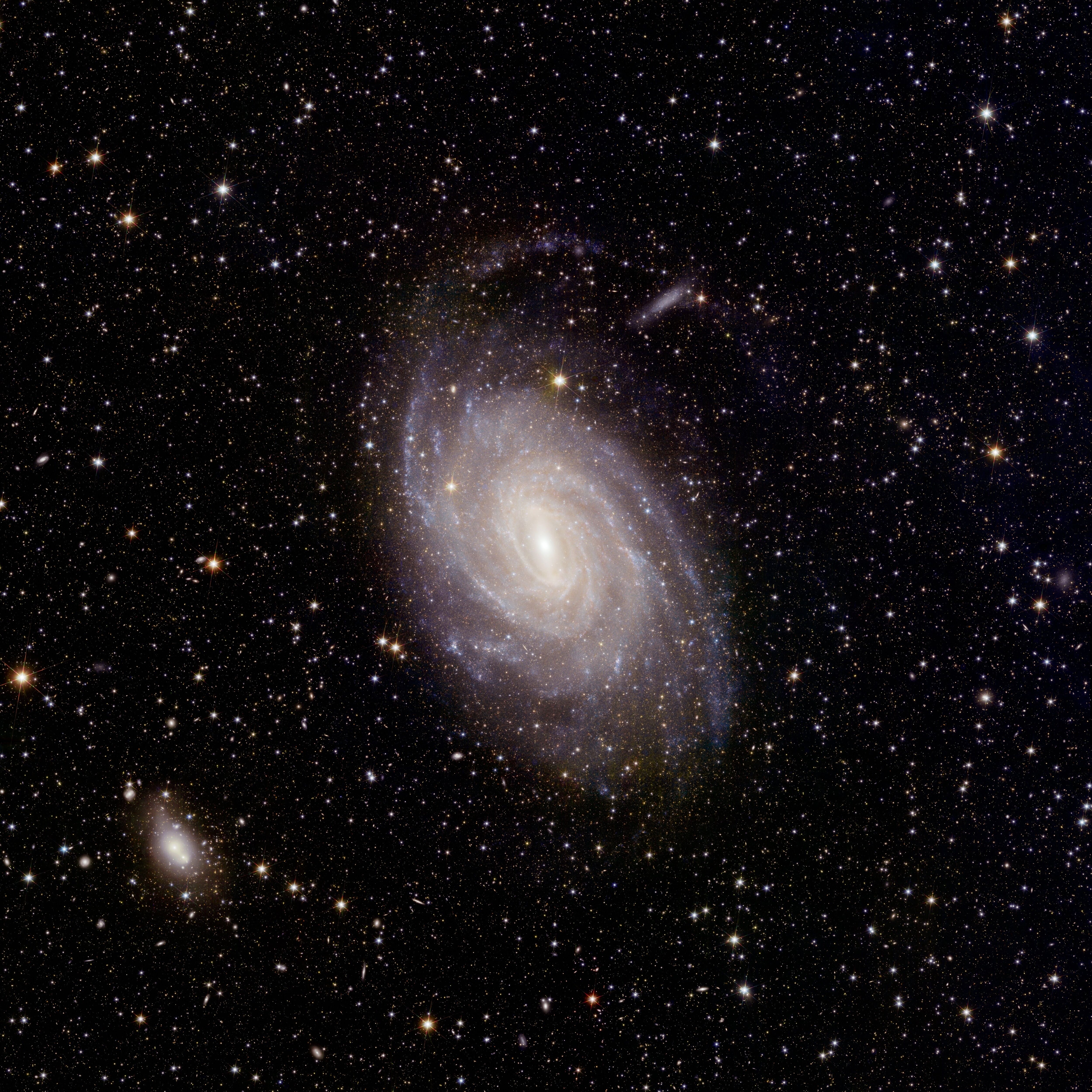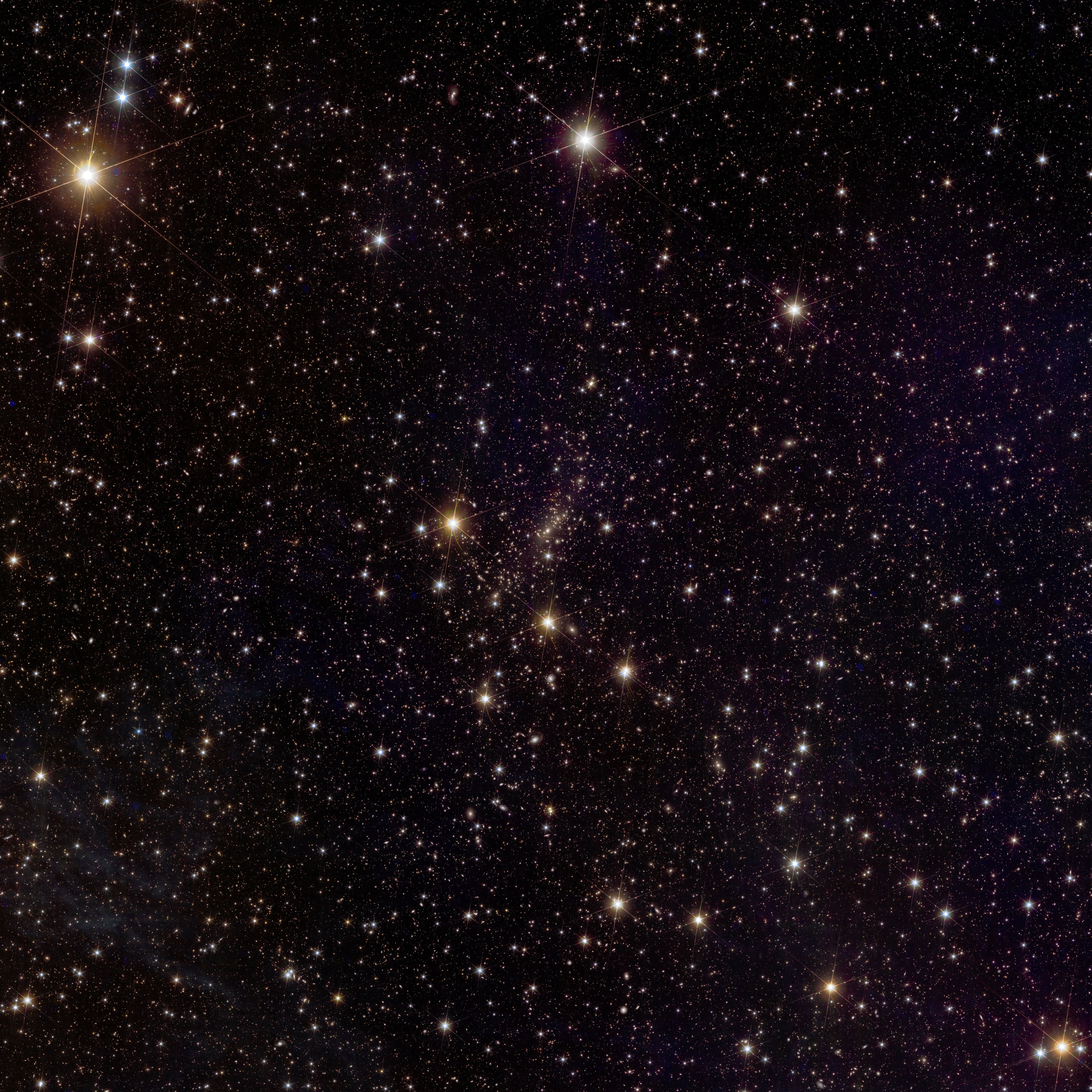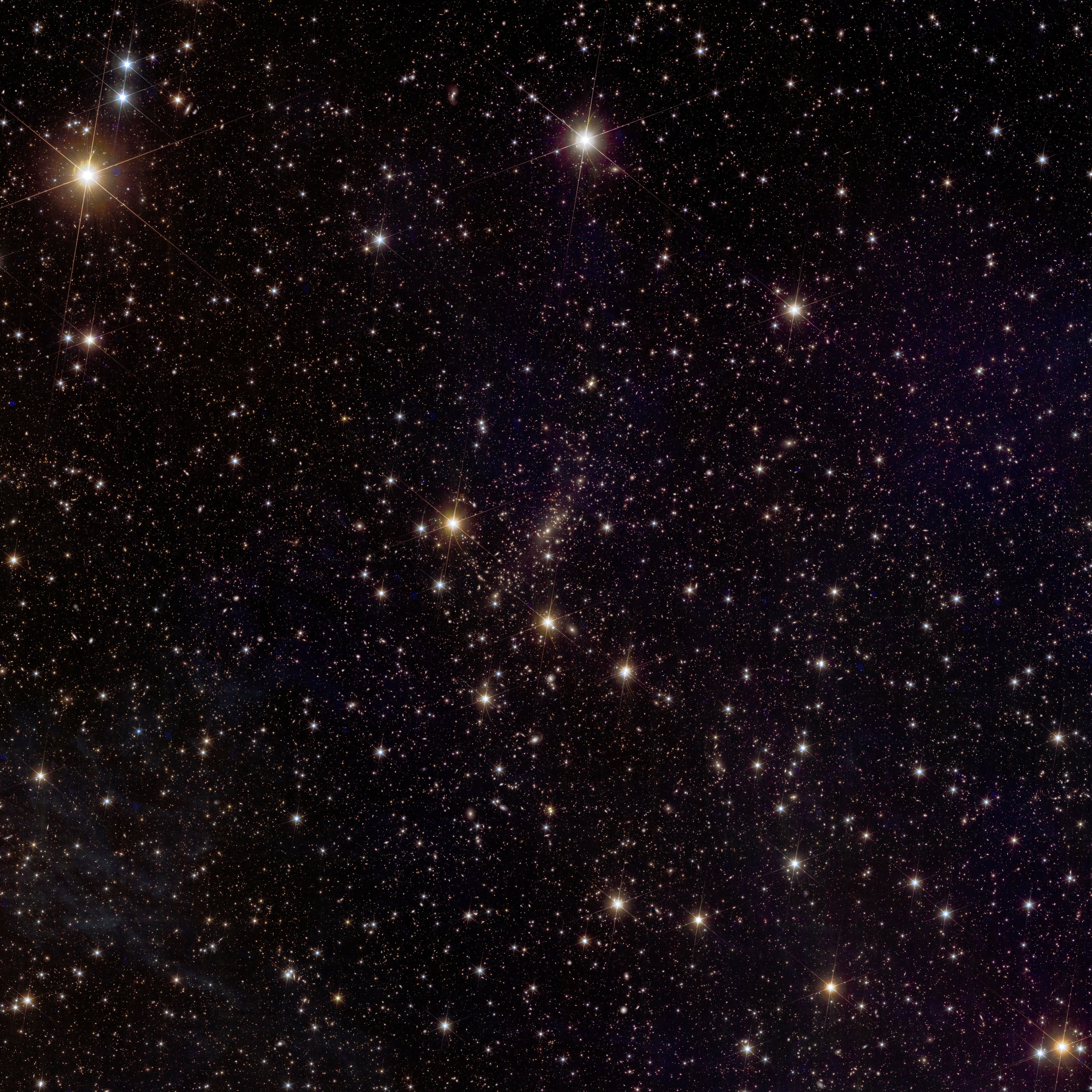
Euclid
Euclid’s new image of galaxy cluster Abell 2390
Please sign in to download.
This image is released as part of the Early Release Observations from ESA’s Euclid space mission. All data from these initial observations are made public on 23 May 2024 – including a handful of unprecedented new views of the nearby Universe, this being one. Abell 2390 is a galaxy cluster, a giant conglomeration of many galaxies like the Milky Way. More than 50 000 galaxies are seen here, the distances to which can be measured thanks to these new observations. Such clusters contain huge amounts of mass (up to 10 trillion times that of the Sun), with much of this being in the form of dark matter – a form of matter that we can’t observe directly, but is purported to together with dark energy make up the bulk of the contents of the Universe. Galaxy clusters like Abell 2390 are large repositories of dark matter, making them ideal astrophysical laboratories for studying its properties. Once Euclid begins its main survey it will capture many thousands of galaxy clusters over around one-third of the sky, obtaining information we can use to make unprecedented constraints on the dark Universe. Euclid’s new view of the cluster showcases one of the telescope’s key techniques for exploring this dark Universe: indirectly measuring the amount and distribution of dark matter in a galaxy cluster via gravitational lensing, a phenomenon where the light travelling to us from more distant galaxies is bent and distorted by this mysterious matter. Thanks to Euclid’s advanced instruments we can see an especially beautiful display of lensing in Abell 2390, with multiple giant curved arcs, some of which are actually multiple views of the same distant object. Alongside understanding more about dark matter, scientists are using Euclid data to measure how the masses and number of galaxy clusters on the sky change over cosmic time, revealing more about the evolution of the Universe (and by extension more about dark energy, which is thought to influence this evolution). Euclid’s cutout view of Abell 2390 also shows the faint ‘intracluster light’ emitted by stars that have been ripped away from their parent galaxies into intergalactic space (the light has been enhanced in the cutout image to make it more clearly visible). Viewing this light is a specialty of Euclid, and these stellar orphans may allow us to ‘see’ where dark matter lies. Euclid captures light ranging from the visible to the near-infrared using its VIS (visible) and NISP (near-infrared) cameras. These can operate simultaneously, imaging wide areas of the sky to create images hundreds of times larger than comparable ones from other space telescopes. This wide field-of-view lets us take pictures of extended objects like Abell 2390 in a single shot, rather than having to take many pictures and stitch them together. Observing a galaxy cluster in both visible and infrared light allows us to see galaxies at a greater range of distances than using either visible or infrared alone – crucial if we want to observe both the galaxies in a relatively nearby cluster and the galaxies lying behind it (far further from us). Euclid can take these types of deep, wide, high-resolution images hundreds of times faster than other telescopes. Abell 2390 lies 2.7 billion light-years away in the constellation of Pegasus. Credit: ESA/Euclid/Euclid Consortium/NASA, image processing by J.-C. Cuillandre (CEA Paris-Saclay), G. Anselmi
